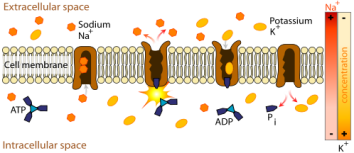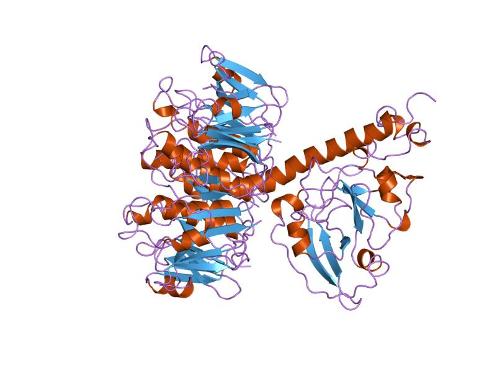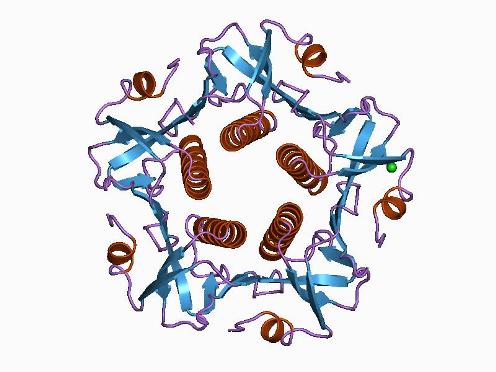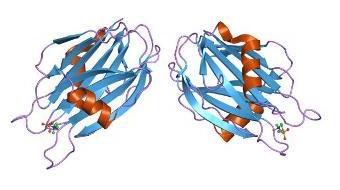Pick On Someone Your Own Size
Plesiomonas shigelloides is a toxic bacterium, but
the word toxic is not as detrimental as it sounds. It simply
pertains to the production of a toxin or poison. This bacterium
produces an enterotoxin very similar to the one produced by
Vibrio cholerae. This is a heat-labile toxin,
meaning it is readily inactivated by heat. Therefore proper
cooking of f ood will destroy this toxin. If the active toxin is
ingested, it binds with cells of the intestine, and proceeds to
enter the cells. Once inside these cells, the toxin stimulates
increased production of an enzyme that disrupts the active
transport (shown to right) of electrolytes (Na+ and K+) through the cell
membrane. Modifying this process inhibits fluids from entering
the cell, so the fluids are then secreted into your intestine.
Excess fluid in your intestines combined with little
re-absorption occurring leads to diarrhea. Below are some
pictures that show the structure of the enterotoxin produced by
Vibrio cholerae from two different angles.
ood will destroy this toxin. If the active toxin is
ingested, it binds with cells of the intestine, and proceeds to
enter the cells. Once inside these cells, the toxin stimulates
increased production of an enzyme that disrupts the active
transport (shown to right) of electrolytes (Na+ and K+) through the cell
membrane. Modifying this process inhibits fluids from entering
the cell, so the fluids are then secreted into your intestine.
Excess fluid in your intestines combined with little
re-absorption occurring leads to diarrhea. Below are some
pictures that show the structure of the enterotoxin produced by
Vibrio cholerae from two different angles.
Plesiomonas shigelloides also produces cytolysins, which are pore-forming toxins. These pores can then act as channels for proteins. This toxin seems to become active when interacting with eukaryotic cells. However, during an infection, the cytolysins have been observed to act as cytolytic agents, which simply means that they are used to invade the cell. The picture below illustrates the structure of cytolysins.
While these toxins produced by Plesiomonas shigelloides may sound pathologically intimidating, they only cause gastroenteritis. In the grand scheme of things, these are mild toxins. To learn about other poisonous and venomous organisms, visit MultipleOrganisms.net.
Check out the facts page for some miscellaneous facts and a short quiz to test your knowledge!



